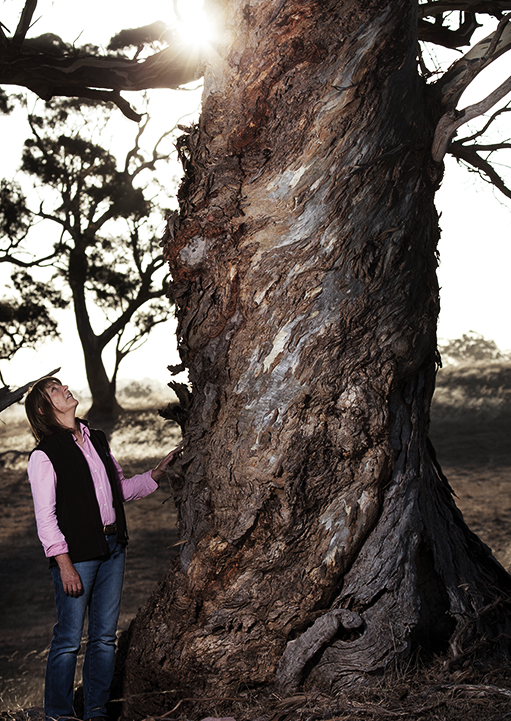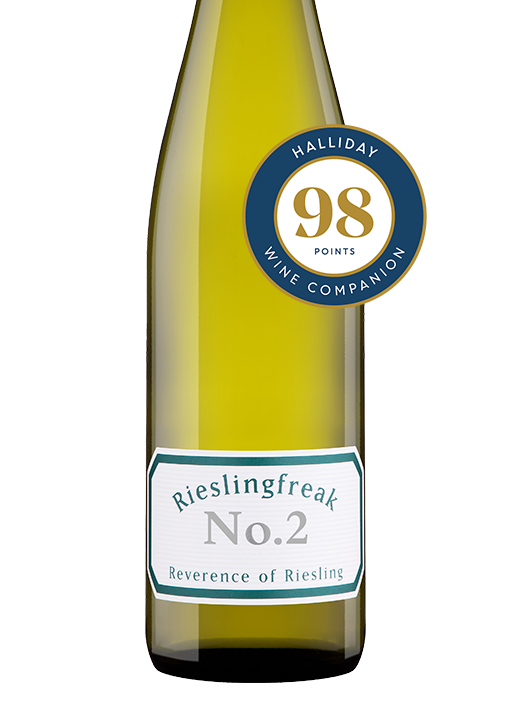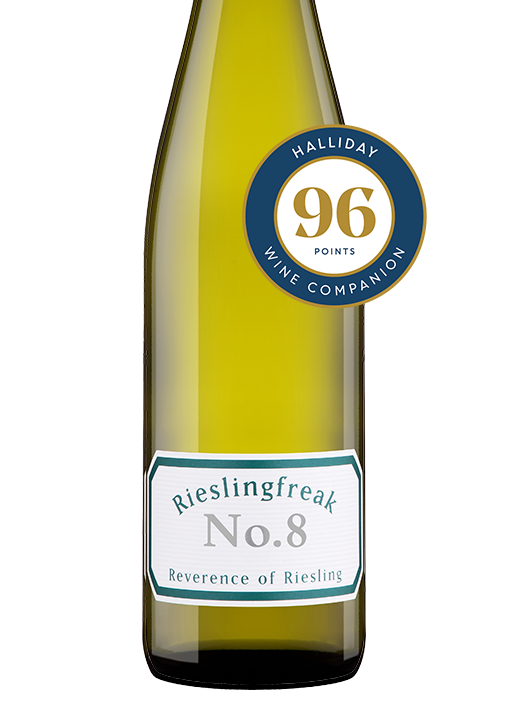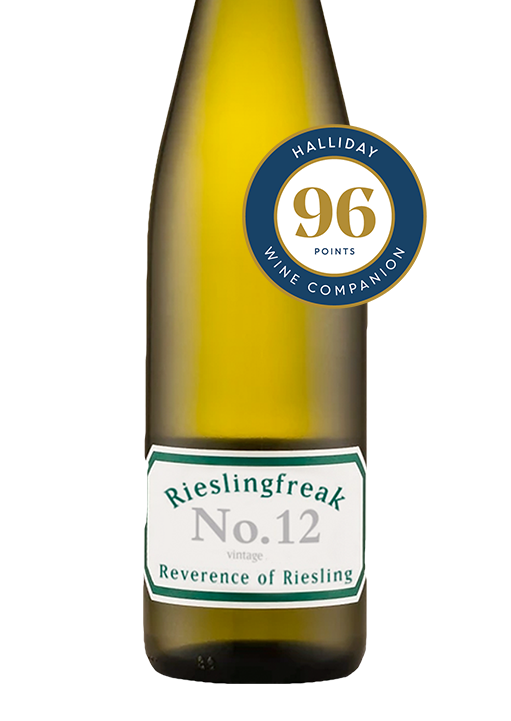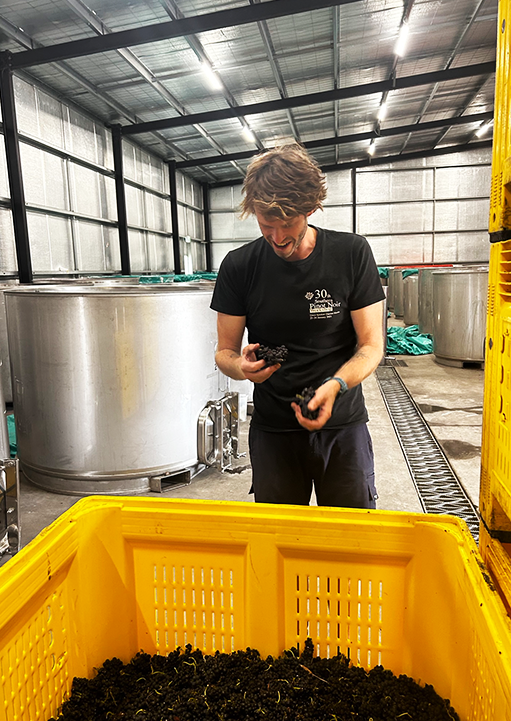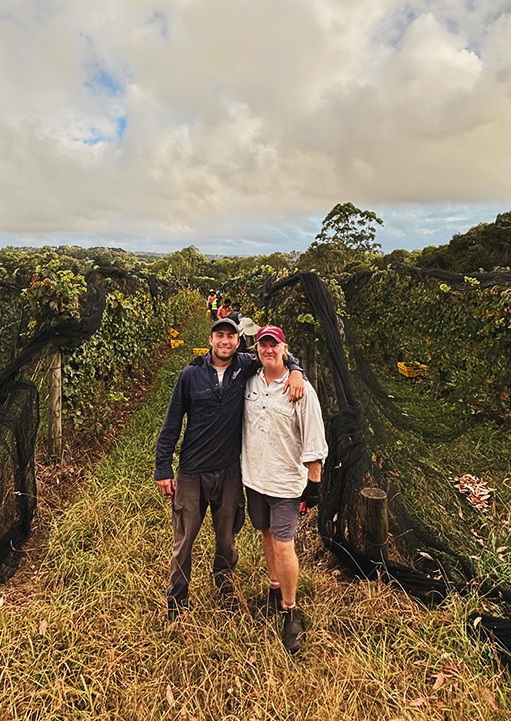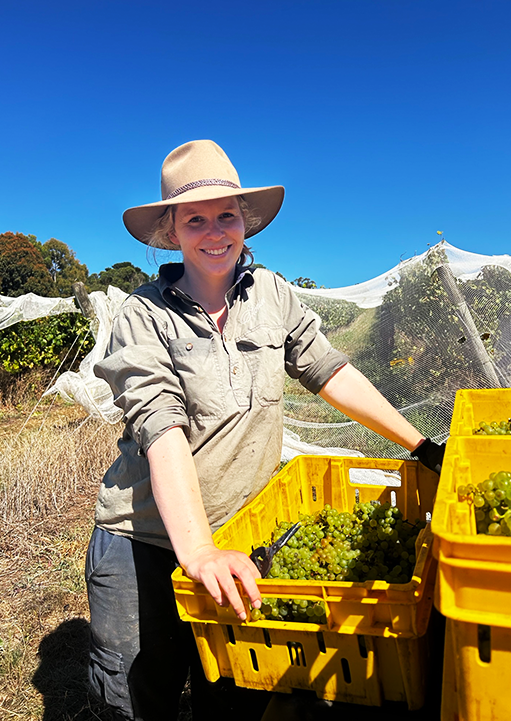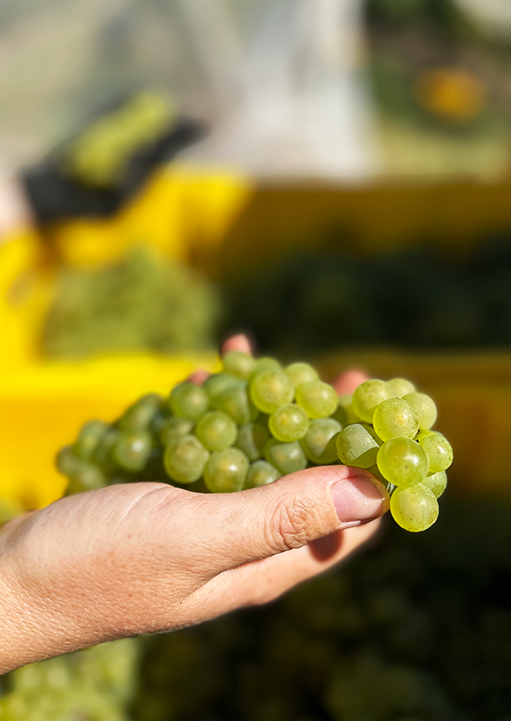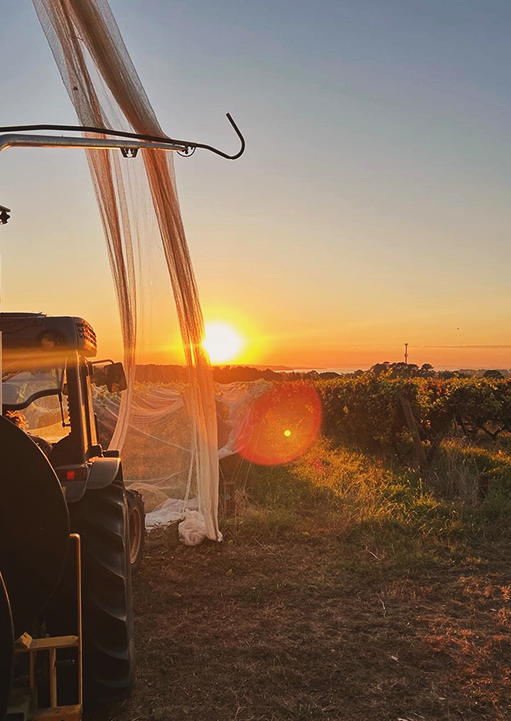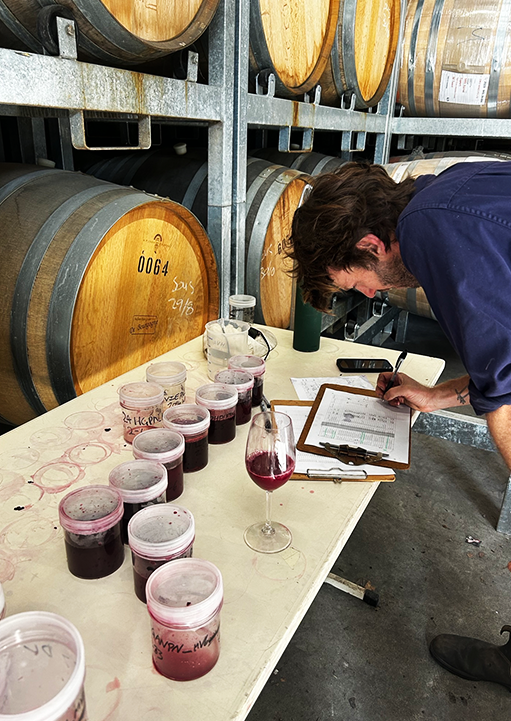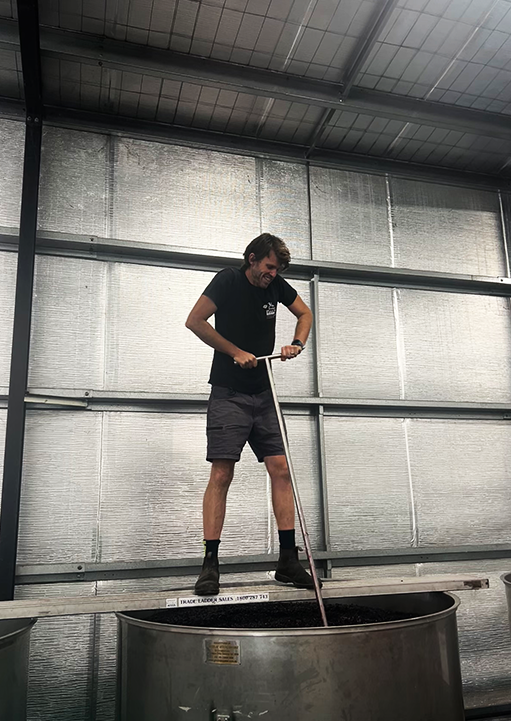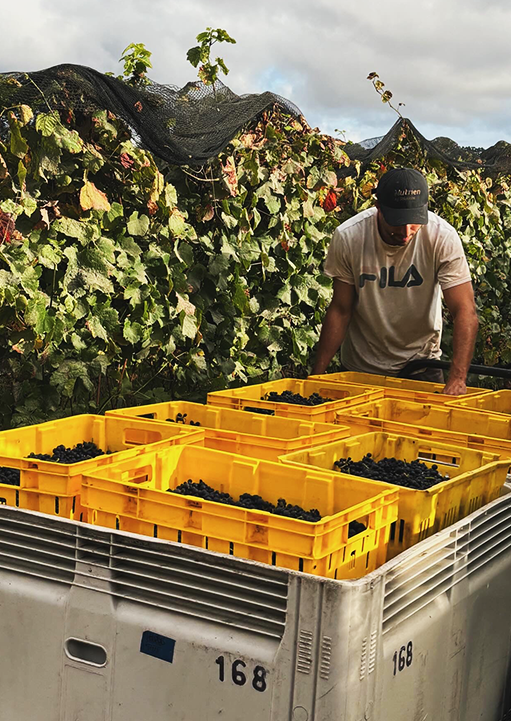Henschke 2021 Single Vineyard Release
A Vintage Graced by An Ancient Land
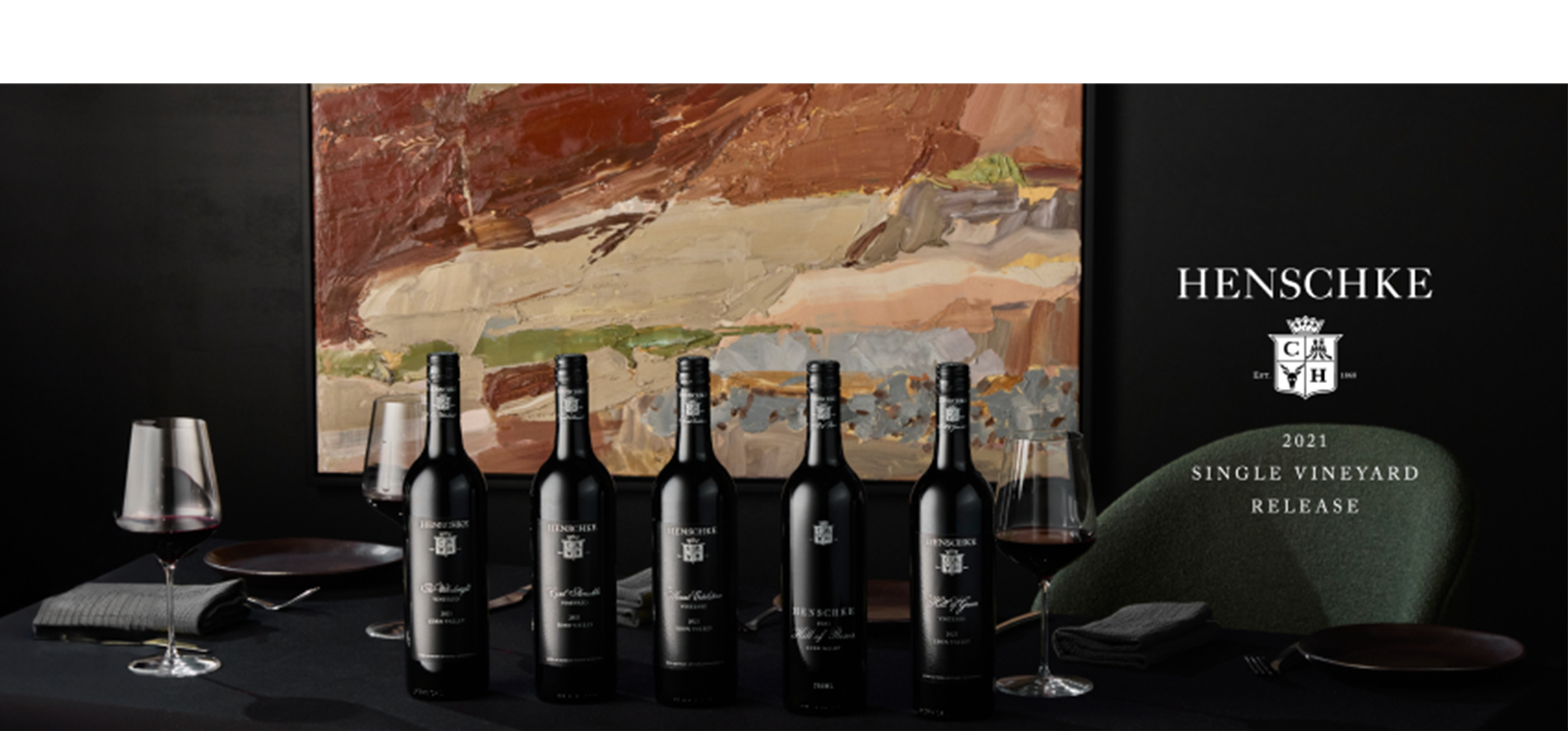
Today marks the global release of the highly acclaimed 2021 Henschke Single Vineyard Release, which includes Hill of Grace, Hill of Roses, Mount Edelstone, The Wheelwright and Cyril Henschke.
The 2021 vintage will be released ahead of the minuscule 2020 vintage, which will be cellared for future release through the Henschke Museum and Rare Program. While the 2021 single-vineyard wines will be released after four years of maturation, rather than five, the Henschke family and winemaking team feel that this exceptional vintage has delivered a collection of wines that are both approachable upon release and will continue to develop even greater complexity over a cellaring potential of 30+ years.
"This year we celebrate the 2021 vintage as one ‘Graced by An Ancient Land’,” says viticulturist Prue Henschke. “The wines speak of the vineyards’ rich, red soils from an eroded mountain range, that have remained undisturbed in this protected pocket for over 500 million years.”
Learn more about the 2021 Single Vineyard Release in the video below.
“The 2021 vintage will be considered a standout of the decade; remembered for complex wines with exceptional varietal expression, balance and purity, that speak of the ancient land from which they originate.”
- Stephen Henschke, Fifth-Generation Winemaker
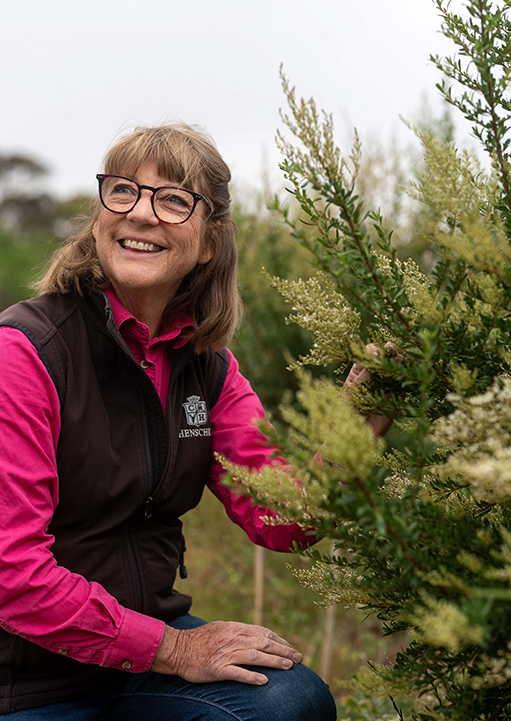 Viticulturist Prue Henschke
Viticulturist Prue Henschke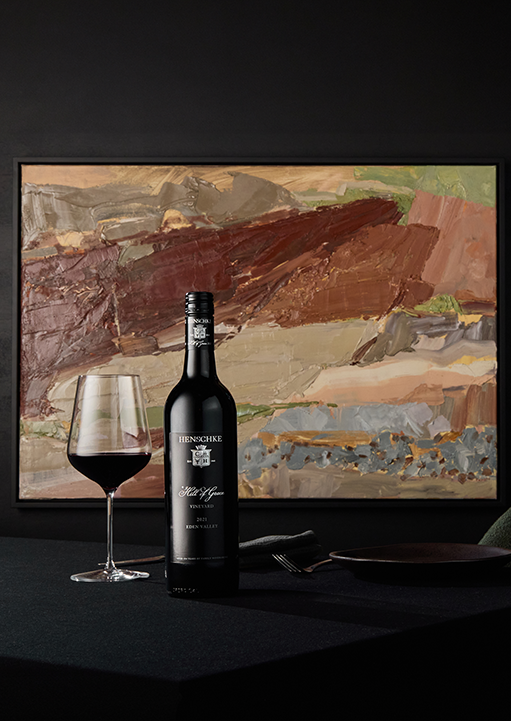 2021 Hill of Grace Shiraz
2021 Hill of Grace Shiraz
2021 Hill of Grace
100 Points | Andrew Caillard MW | The Vintage Journal
"A beguiling and lasting landmark Hill of Grace vintage with wonderful definition, vinosity and torque.”
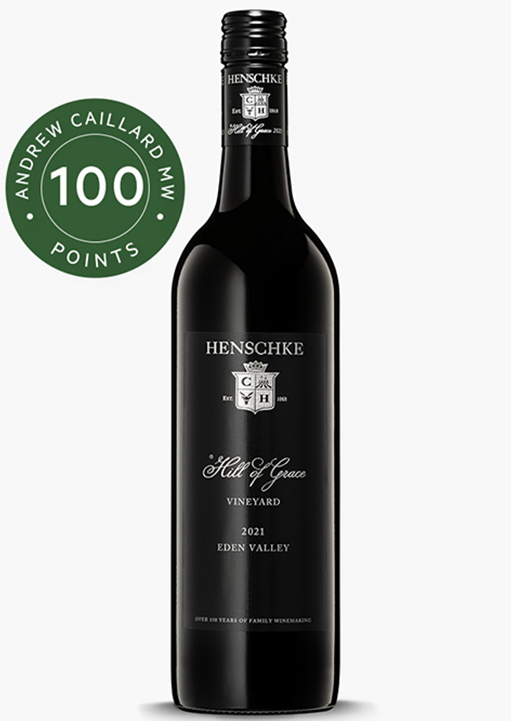
2021 Hill of Roses
99 Points | Ken Gargett | Quill and Pad
"The best Hill of Roses I've tasted...Seamless and elegant, the tannins here are delicate silk. An astonishing wine of great length."
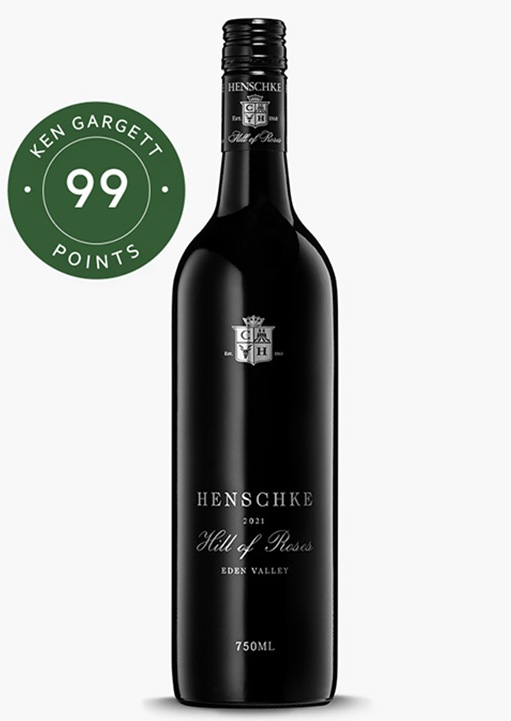
2021 Mount Edelstone
99 Points | Andrew Caillard MW | The Vintage Journal
“This is a gorgeous reference Eden Valley Shiraz with superb fruit definition, energy and flow.”
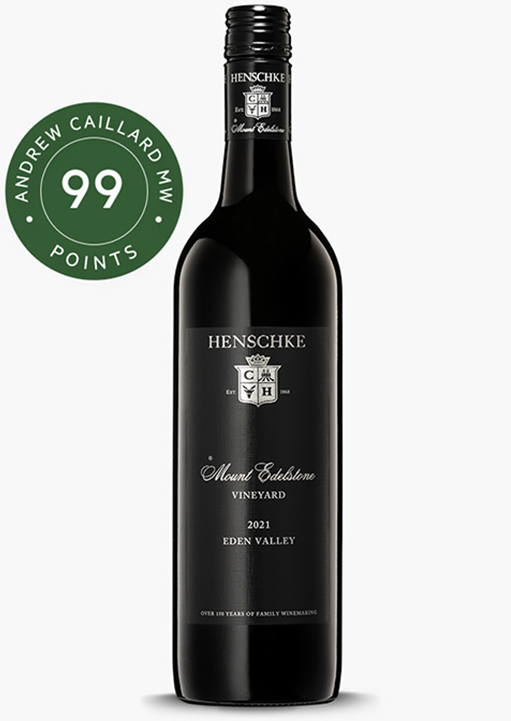
2021 The Wheelwright
96 Points | Huon Hooke | The Real Review
“…impressive concentration and a voluminous core of fruit sweetness allied to abundant tannins of a velvety suppleness. Gorgeous shiraz.”
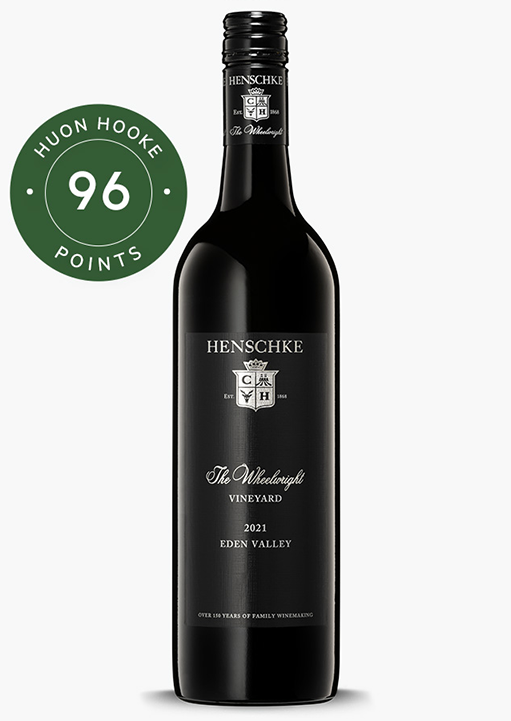
2021 Cyril Henschke
97 Points | Andrew Caillard MW | The Vintage Journal
“A lovely claret style infused with the perfume and terroir of the Eden Valley.”
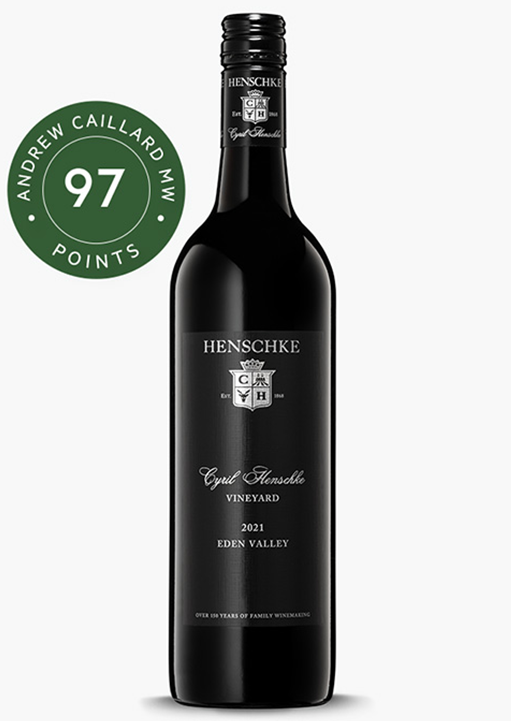
Mezzanine is delighted to celebrate the release of these beautiful, rare and highly respected Australian wines.
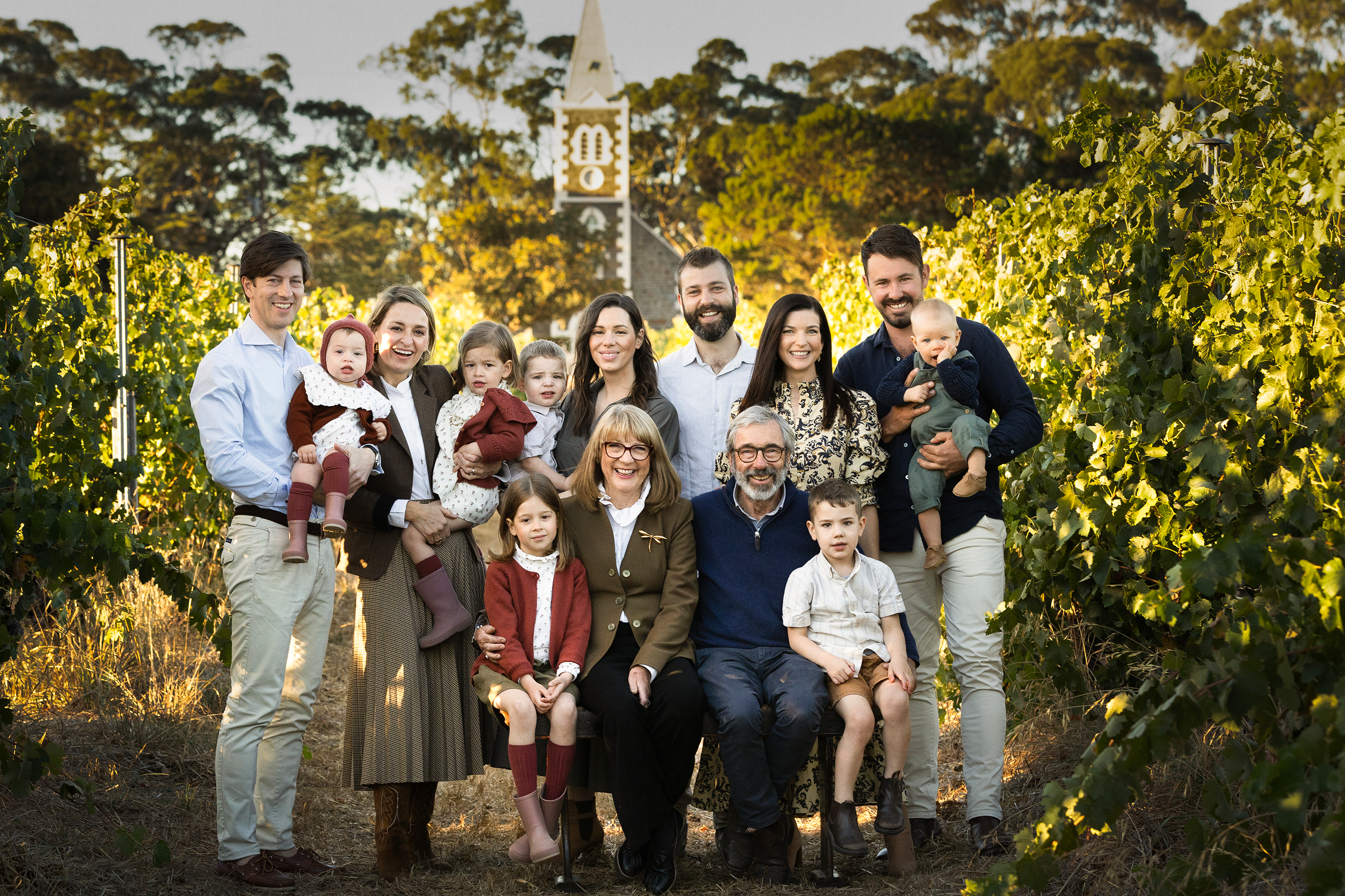
The fifth, sixth and seventh generations of the Henschke family
Rieslingfreak accolades to celebrate
The Halliday reviews are in, and it’s GOLD all around for Rieslingfreak's 2024 vintage wines. Reviewed by Dave Brookes, the entire range received 95+ points. An incredible achievement for John Hughes and the Rieslingfreak team.
Rieslingfreak is available in VIC, QLD and SA. Contact your Area Manager to explore the range now.
2024 Rieslingfreak No.2 Polish Hill River Riesling
"Polish River-sourced fruit from two picks spaced 10 days apart. Water-white with a flash of green and fruit aromas of freshly squeezed lime juice, makrut lime and lemongrass. Hints of citrus blossom, crushed stone, celery salt, Christmas lily, green-apple sorbet and liminal notes of clover and honeysuckle. Such a sleek, tightly bound package, with a steely focus, porcelain acidity and a pitch-perfect tubular palate shape. It's lovely saline and sapid drinking now, but this will age beautifully." - Dave Brookes
Very limited. Contact your Area Manager to order
2024 Rieslingfreak No.3 Clare Valley Riesling
“Such a beautiful, concentrated yet composed wine from John's mum and dad's vineyard at White Hutt, 5.8km north of the Clare township. So perfumed and essential, with crunchy lime, green apple and grapefruit alongside high tones of wildflowers, Christmas lily, jasmine, talc, mineral salts, peach skin and stone. Concentrated yet super-tight on the palate with a tubular core of focused lime and citrus fruits, a beautifully fine structure and a tangy, energetic line with velocity to burn. A superb, pristine wine.” – Dave Brookes
Very limited. Contact your Area Manager to order
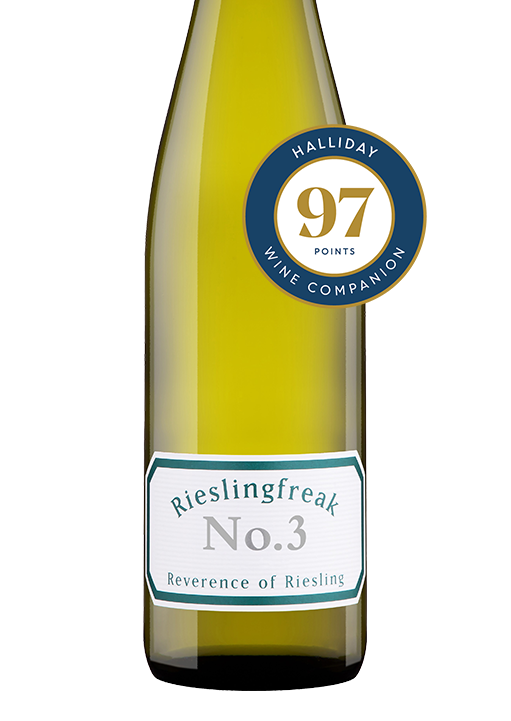
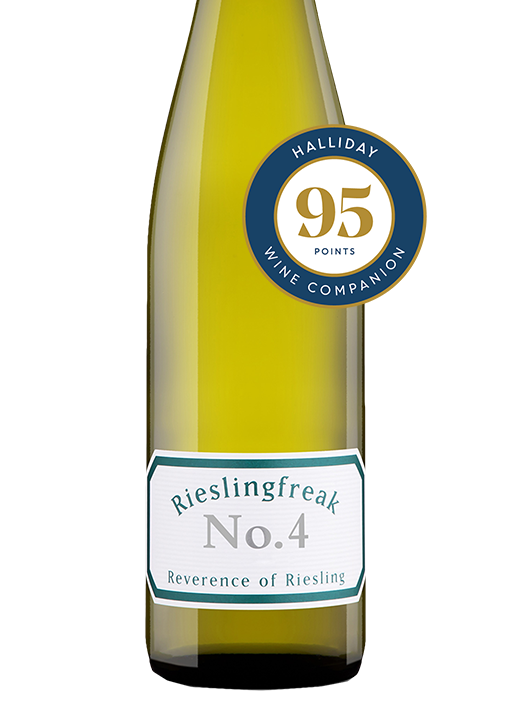
2024 Rieslingfreak No.4 Eden Valley Riesling
“Sourced from Rieslingfreak growers in the Eden Valley, predominately the High Eden; John recalls there were lots of smaller bunches in the '24 season. Tight and high-toned, as all Eden Valley riesling should be, with Bickford's lime cordial and Tahitian limes at its base. Hints of orange blossom, crushed quartz, lemongrass and stone with a light, balanced sheen of phenolics and a febrile sense of urgency as it careens across the palate, finishing fine and long.” – Dave Brookes
2024 Rieslingfreak No.5 Clare Valley Off Dry Riesling
“I'm a sucker for a good off-dry riesling (here, it's 13g/L RS), and this certainly ticks a lot of boxes for me. The palest of straw and green flashes in the glass with fruit tones of lime, green apple, white peach and crunchy nectarine. Hints of citrus blossom, riverstone, wildflowers, starfruit and apple sorbet. There's a real tension to this wine, a pressure-like interplay between RS and acidity that releases with a long, purely fruited draw on the finish, seeming drier than you'd expect as the acidity tempers that gentle sweetness beautifully. Bravo.” – Dave Brookes
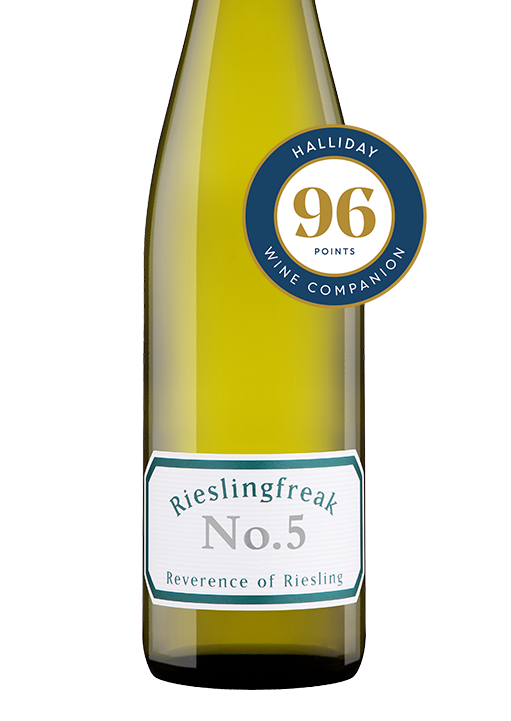
2024 Rieslingfreak No.8 Polish Hill River Schatzkammer Riesling
“An unctuous Polish Hill River-born riesling from the Jaeschke family vineyard that sports 32 g/L of RS in an Aussie Kabinett style. Super pale with a green flash and pure and expressive fruit tones of lime, grapefruit, custard apple, feijoa and pomelo with underlying hints of orange blossom, frangipani, riverstone and some vaguely earthy mycelial undertones. It's an enchantingly pure wine, its finely honed tension making it appear drier than you'd expect, with a fine, minerally cadence, an ache of umami and a drawn-out lime sorbet finish. Superb drinking.” – Dave Brookes
Very limited. Contact your Area Manager to order
2024 Rieslingfreak No.10 Zenit Riesling
“What's not to love about a blend of two of Australia's finest riesling regions? This year, 65% Flaxman Valley in the Eden Valley and 35% White Hutt old vines from the Hughes family vineyard in the Clare Valley. A beautifully perfumed and potent-smelling wine with achingly pure characters of freshly squeezed lime, Bickford's cordial, Christmas lily, frangipani, orange blossom, bath talc, crushed stone, grapefruit and green-apple sorbet. Headspinningly pure and sleek along its length, it's a high-tensile ride that is at once nervy yet powerful, everything just purring like a finely-tuned engine. Man, it's a lovely wine.” – Dave Brookes
Very limited. Contact your Area Manager to order
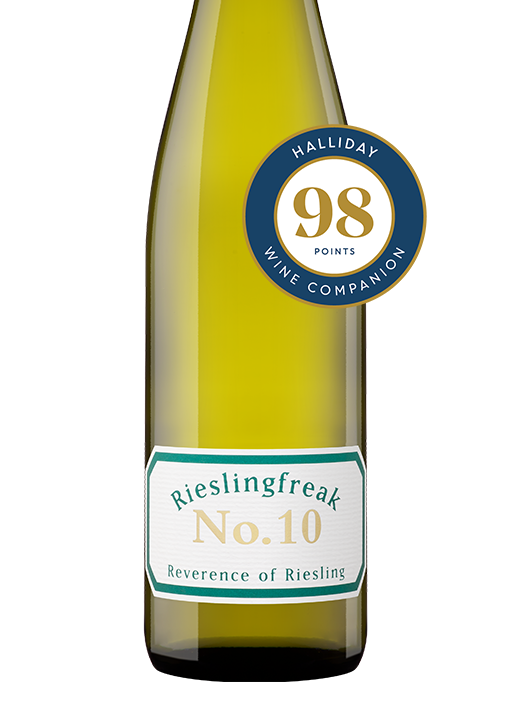
2024 Rieslingfreak No.12 Flaxman Valley Riesling
“From the Lienert family vineyard in Flaxman Valley, way up in the cool climes of the High Eden subregion of the Eden Valley. Fruit tones of freshly squeezed lime, grapefruit and lime with underlying citrus blossom, passionfruit flower, makrut lime, crushed quartz and stone. Some nice concentration here, but it's all about focus and tension, the wine tensing initially and releasing with a burst of limey fruit and a nervy mineral energy.” – Dave Brookes
Very limited. Contact your Area Manager to order
New to the Collection
Welcome Audrey Wilkinson and Pooles Rock
Mezzanine is delighted to welcome into the national portfolio two of the Hunter Valley’s most well-known and respected wineries, Audrey Wilkinson and Pooles Rock.
Owned and operated by the Agnew Family which has a history in the Hunter Valley, NSW, dating back to 1866, Audrey Wilkinson is one of the oldest and most prestigious wineries in Australia, producing award-winning wines that reflect the unique terroir of the Hunter Valley. Pooles Rock is a boutique brand that focuses on single-vineyard wines from the Hunter Valley and other premium regions in Australia.
The Agnew family is committed to sustainable viticulture and winemaking with all 62 hectares across 4 sites in the Hunter Valley as certified and is a member of the Australian Wine Research Institute's Entwine program. The Agnew family are still very much involved in the day to day running of the wineries with both the son, James, heading up the business as Managing Director and daughter, Jessica, as the Finance director. Chief Winemaker, Xanthe Hatcher, joined the business in 2022 and was nominated for Gourmet Traveller Winemaker of the Year that same year.
Agnew Wines produces some of the finest wines in the Hunter Valley, with a focus on regional expression, elegance and balance. We are excited to introduce these wines to our customers nationally and to showcase the diversity and quality of the Hunter Valley region.
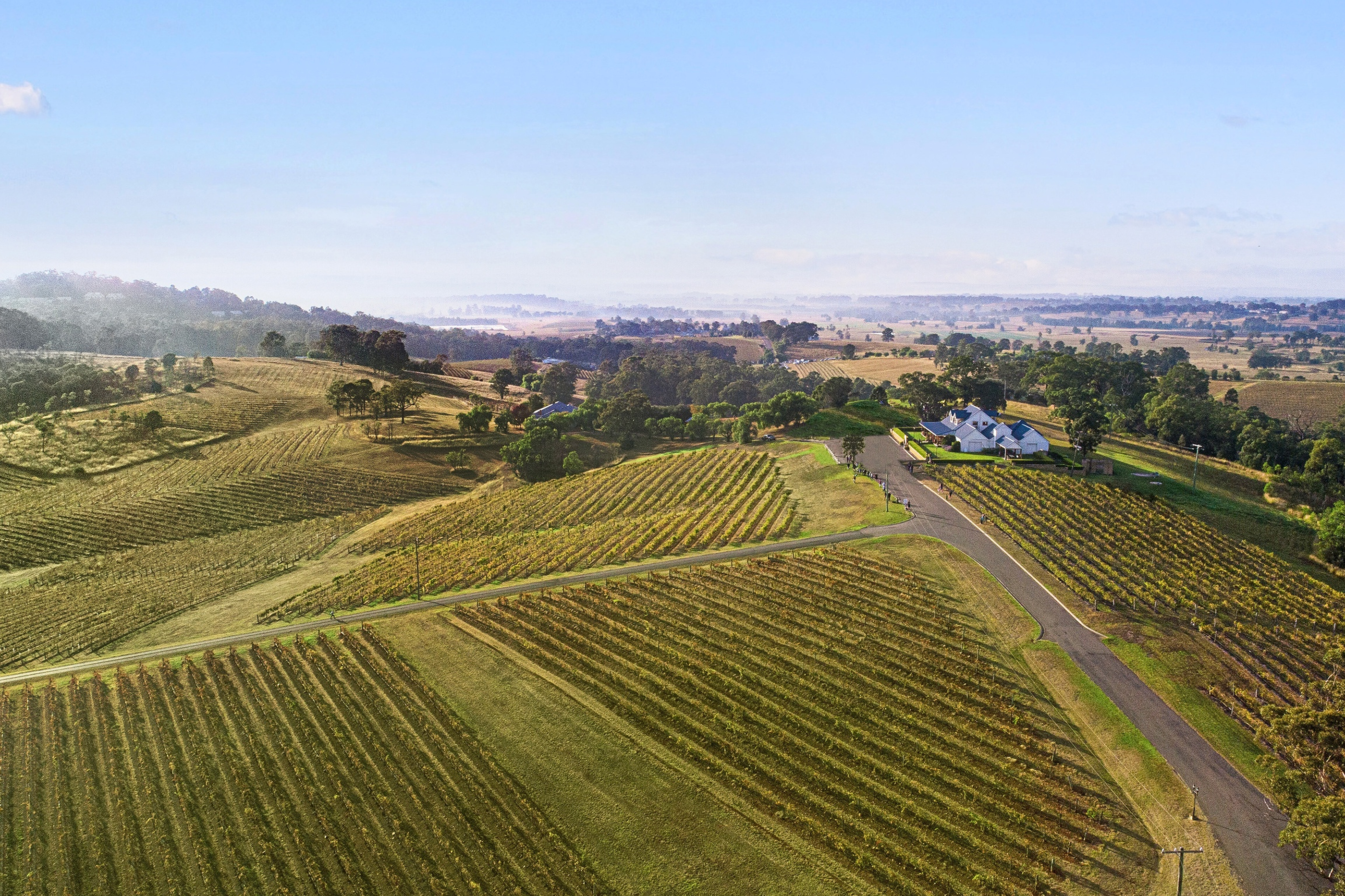
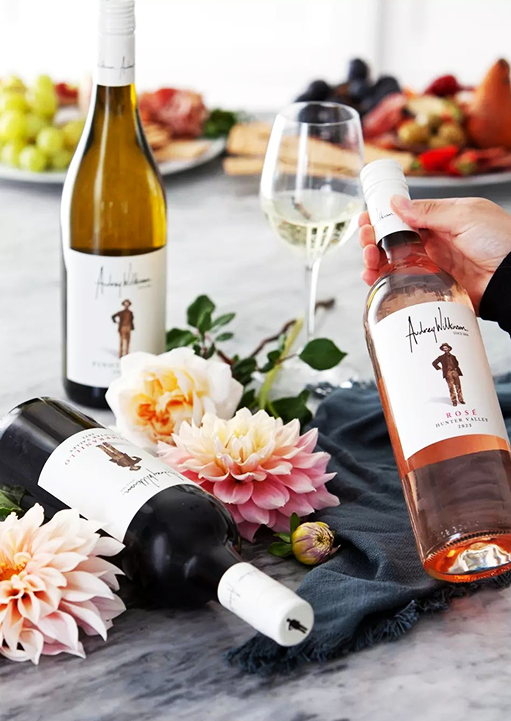
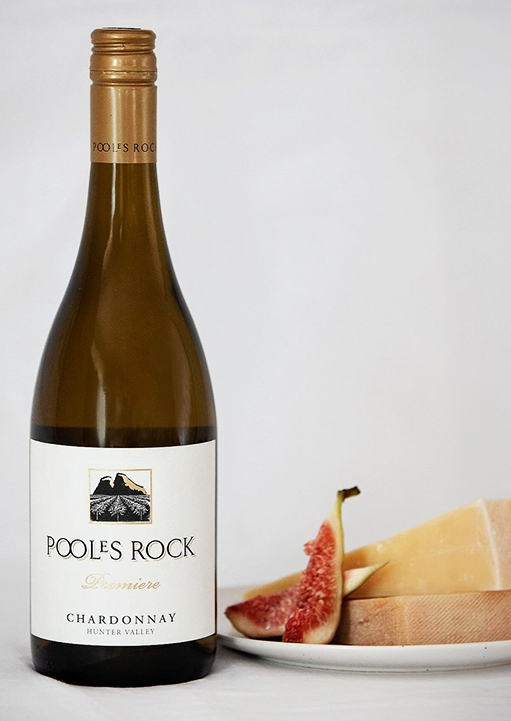
Sip Size Matters
A deep dive into the 250ml phenomenon
By Maurice Parfait, Area Manager VIC
In the highly competitive, ever-evolving world of dining, where every small detail contributes to the full symphony of experience, a subtle but significant wine trend is sweeping across the hospitality landscape and finding a home in restaurants, bars, bistros and pubs alike.
I speak, of course, of the prolific rise of the 250ml pour option (or what we in the wine world refer to as “Choice of Pour”).
It was toward the end of 2021, post-covid (or as I prefer to say, ‘P.C.’) when I first really noticed how common 250ml pours were becoming. I actually recall one restaurant owner jokingly refer to the 250ml pour as the “lockdown pour”, suggesting that consumers may have become used to pouring themselves larger glasses at home and are now more open than ever to ordering a larger glass out.
After indulging in my own fair share of 250ml glasses, I began to question what the benefits were to venues who decided to offer it. Lo and behold, I quickly learned that Choice of Pour delivers a variety of highly tangible benefits, including enhanced profitability, reduced pressure on waitstaff and an overall elevated consumer experience – ultimately leading to more return business and a healthier business account.
But how, you ask? Let's uncork the secret juice behind this movement and examine why you as an owner, venue manager or sommelier might want to consider embracing it to unlock its spectrum of benefits.
More options, more "Bang for Buck"
At the heart of this trend lies the invitation for patrons to indulge in a longer sip of their favourite wine, while simultaneously enjoying a better value proposition compared with a smaller 150ml glass.
Picture this: you’re sat at the cosy corner table in your favourite local restaurant, just the two of you. As you peruse the wine list, you notice 3 options – 150ml, 250ml and 750ml. You agree that sharing a bottle might be overkill for a Wednesday night, despite the value add.
You think you’ll probably end up enjoying around 1-2 glasses each, depending on how the mood strikes you along the culinary journey.
Enter 250ml - the perfect compromise, presenting you the opportunity to enjoy a more generous helping of your favourite wine style, without the need to commit to (or agree on) a full bottle to share. And to top it off, the larger glass even offers you 10% better value than the 150ml. Yes, please!
As consumers, we love it when we can select an option which not only better fits our needs but also offers us the opportunity to extract more value. It simply feels good, and although it’s a very small little detail taking place within a matter of 60 seconds, all of us in hospitality know that it’s a string of one-percenters that can make (or break) an outstanding experience.
More time back in the hands of waitstaff
The benefits of the larger wine glass option aren’t limited to the patron though – they’re also felt in real time behind the bar.
Consumers electing to lavish in the larger pour will take almost twice as long to finish their glass compared to a smaller 150ml. This extended duration of consumption reduces the frequency in which waitstaff are required to take a re-order, thus alleviating pressure by slowing the pulsing tempo of service and allowing staff to provide a faster, higher quality and more personalised level of service.
Although less ‘tangible’, the increased level of service, as a direct result of the reallocated time, can easily result in an increased chance of return business and spend per head. Talk about a win-win!
More dollars in the till
Now, let's talk about the bottom line.
We know choice of pour can be a great tool to enhance customer experience and give back more time to staff. But the real question is: what about profitability? In a time where many operators are feeling the blow of a declining spend per head associated with the ever-rising cost of living, it’s become more important than ever to maximise profitability in all facets of the business – with the wine list being no exception.
I’m excited to share that every single venue I have asked who has introduced Choice of Pour and has actively tracked their numbers has reported an increase in total revenue generated from wine.
The reason for the increased profitability boils down to two key factors:
1. A reduction in ‘tip-out’ (minor benefit)
2. An overall increased spend per head (major benefit)
Reduced 'tip-out', Negated Loss
Ever notice how frustrating it is when you need to crack a whole new bottle of wine to serve a single 150ml glass toward the end of service. Especially when it’s a slower moving varietal, like say, Cabernet Sauvignon, that most likely won’t snag a re-order before the lights shut off (sorry Cabernet, we still love you and know you’re making a comeback). Even worse, on a Sunday night when the venue might be closed for a couple of days before re-opening on, say, Wednesday.
Without a means of preservation, you know full well that the rest of that bottle is likely destined to either be tipped down the drain (worst case), transformed into a jus (best case) or taken home with a tired, thirsty staff member - either way eliminating any opportunity for profit, and actually resulting in a small loss if the price of a glass is set at less than the LUC of the bottle (which is typically the case).
If only there was a solution…?
*Choice of Pour has entered the chat*
Let’s say you purchase your ‘By the Glass’ Cabernet Sauvignon from your supplier at $16 LUC and sell it off the list for $14 per 150ml glass. If you only sell one 150ml glass out of the bottle before the wine oxidises and is no longer good to serve, then you’ve just gone backwards $2 on that bottle. However, if instead you were to sell just one 250ml glass at $21 per glass before the rest had to be poured down the drain, you’ve at least still made $5 on the bottle – and more importantly haven’t gone backwards.
Now, of course not every wine drinking patron will opt for a 250ml, but if 1 in 3 do then this can have a surprising impact. If you’re tipping out an average of 2 bottles per day (or 12 bottles over a 6 day operating week) where only a single 150ml serve was poured out, then in the same scenario above over a 5-day operating week you’ll be losing as much as -$1000 per year.
However, if instead you were to sell just one 250ml glass from just 4 of those 12 bottles which are destined to be tipped out, then you’ve completely negated the loss of all 12 bottles and are now in fact up by +$200 for the year and no longer losing money on your oxisdised 'tip-out'.
In addition to this, it only takes 3 x 250ml glasses to completely empty a bottle and maximise its earning potential (vs 5 x 150ml glasses).
Higher Spend per Head
Far more impactful than a reduction in tip-out loss is the opportunity that a 250ml option offers to upsell every glass of wine sold, and therefore gain an additional $5-10 (or more) per glass.
It might not seem like much, but if 25 patrons during a service upgraded one of their glasses to a 250ml glass with an average price increase of +$7, then that would equate to an additional $175 revenue boost for the day. Over the course of a year with 5 services per week, that’s a +$43,000 increase in revenue!
Now we’re talking.
A little staff training can go a long way in bumping up the conversion rate too. Simply having your staff trained to ask the question “would you prefer a regular or large glass” after every wine glass order can have a powerful impact.
Even in the rare case where a patron decides to enjoy 1 large glass instead of buying 2 regular glasses, thus seemingly lowering their total spend per head, at the very least they have still given back valuable time to waitstaff, enjoyed a more uninterrupted experience, and have potentially helped to reduce the amount of tip-out wastage.
How to implement in your venue
Glassware
The first, and usually biggest, obstacle will typically be glassware. In most cases, it will be necessary to order in some new larger, etched wine glasses which are capable of comfortably holding a 250ml pour with accuracy and without looking too full to the brim. Although it’s sometimes possible to still fit a 250ml pour into a smaller wine glass, if the glass is too full it will diminish the ability to swirl the wine and unlock its aromas.
For venues offerings 150ml and 250ml pours, we typically recommend using a glass with at least a 500ml volume capacity, ideally etched with a vertical plimsoll line with the top and bottom of the line indicating the two different volumes.
For venues who prefer a more personalised touch, another popular move is to have the glassware professionally etched with the venue’s logo, with clear points of the logo indicating the two pour lines for the benefit of staff (this is also something your Area Manager can assist with).
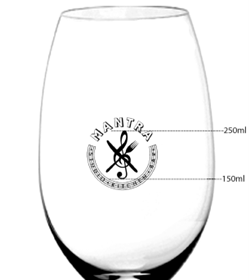
(If you are looking for such a glass, then the Plumm Everyday Red Etched (560ml) is an excellent choice. Speak with your Area Manager for any glassware enquiries).
If the prospect of replacing all your glassware is too large a barrier, then fear not – it’s not necessary to replace 100% of your glassware. Somewhere around one third should typically do the trick to start with, as your existing glassware can still be used for all 150ml pours.
From there, as new glassware is gradually required you may choose to continue to order in the larger, etched glasses, until eventually all your glassware is now equipped to facilitate both 150ml and 250ml pours.
Wine List Printing & POS Adjustment
The next thing you’ll want to do is print yourself a new wine list to include three pricing columns instead of two - now indicating 150ml, 250ml and 750ml/bottle pricing. The same goes for the Front of House POS system.
Regarding pricing, a good rule of thumb is to price a 250ml glass at 1.5x the sell price of your 150ml (e.g. if you normally charge $12 for a 150ml glass of Pinot Grigio, then this would mean a 250ml glass would be priced at $18). It’s an easy calculation that typically results in a nice round number, while offering a slight value add to the consumer who is in fact receiving 1.67x more volume of wine than a 150ml glass. This difference delivers about a 10% value-add to the patron by opting for a larger glass.
But wait… isn’t offering a saving counterintuitive to increasing total profit?
It may seem so on the surface, but this strategy is already deployed in many other areas across the on-premise sector, and for good reason. Just look at beer vessels (pots/schooners/pints), cocktail jugs, takeaway coffee cup sizes, fries, pizzas and so on. Accepting a slightly lower margin % in exchange for a higher total spend is a universally accepted and proven strategy in all realms of business to drive up the all-important spend per head, and subsequently total revenue.
However, if you are concerned about the potential loss, I have seen several venues execute Choice of Pour without offering a saving at all – simply pricing the 250ml at roughly 1.67x the price of a 150ml. Although reducing the value incentive to upgrade to the large glass, this can still be successful and potentially worthwhile.
Concerned?
Lastly, if you’re all on board for the idea of implementing 250ml wine pours but are concerned about the potential RSA implications – we get it. A 250ml pour can easily equate to 2 – 2.5 standard drinks, and as an operator it’s important to know you that you’re not landing yourself in any hot water and stepping over any lines.
Rest assured, 250ml wine pours are 100% legal to offer, and in fact a 250ml wine pour contains a similar alcohol volume to many cocktails and pints of +5% beer.
Of course, there should always be an additional layer of care taken when offering higher alcohol volume drinks, and it’s important that staff are trained to act accordingly by remaining vigilant to signs of intoxication and deploying informed discretion at all times.
Ultimately, it’s clear that the rising trend of a larger glass option in Australia’s on-premise scene is not going away any time soon, and alongside the traditional 150ml option can offer a multitude of benefits for both venues and their patrons. In fact, I have been told by several British friends that these days multiple glass sizes are less of a trend and are now more the norm in the UK.
Although it’s seen significant growth in recent years, still, the majority of venues in Australia have yet to adopt Choice of Pour. This presents forward-thinking operators with an opportunity to jump on board and get ahead of the curve (and their local competition), and in doing so cultivate a more relaxed and toast-worthy dining experience that resonates long after the last drop is savoured, while also enjoying a welcome boost to the bottom line.
Please reach out to your Area Manager if you have any questions or would like to discuss how to go about implementing Choice of Pour in your venue.
Domaines Schlumberger
By Hilary Fordham, Group Wine Ambassador, DIPWSET
Domaines Schlumberger is a historic estate located in Guebwiller, a small town in the Alsace region in north east France. With a legacy dating back to 1810, and 140 ha of vineyards, half of which are in Grand Cru sites the estate is renowned for crafting exceptional wines from the region's noble varieties.
The Domaine boasts steep, terraced vineyards on the slopes of the Vosges Mountains, where the cool but sunny and dry climate and mineral-rich soils create ideal conditions for grape cultivation. Aromatic varietals like Riesling, Gewürztraminer, and Pinot Gris thrive in this unique environment producing wines of elegance and complexity. The Domaine's commitment to traditional methods alongside modern sustainability practices ensures each bottle reflects centuries of winemaking expertise and a profound respect for the land.
Thomas Schlumberger, 7th generation and current custodian (alongside sister Severin) was in Melbourne recently meeting with trade to taste and discuss the new releases from the highly rated 2021 vintage.
The day began with a team tasting here in the Joval office where we tasted across the Les Princes Abbes range (named in homage of the Prince Abbots who cultivated the vineyards for over 1000 years).
The 'LPA' range was followed by a select tasting of wines from some of the Domaine's Grand Cru holdings including the 2020 Kitterle Riesling - a vineyard nicknamed the 'calf-breaker' due to its sheer steepness!
Trade visits included a notable stop at Bar Olivine, situated in the historic Pentridge Prison site, the tasting taking place in a renovated 'prison cell'. The venue's remarkable wine list and fit out make it a must visit!
The tour concluded at University House, where Thomas has cultivated a loyal following over the years. 40 keen tasters attended the master class where Thomas spoke at length on the individual soil characteristics and terroir of the 4 Grand Cru vineyards (Kessler, Kitterle, Spiegel and Saering).
Christian Maier, sommelier of Uni House and an Alsatian native, expertly paired each course of the Alsatian inspired dinner with a Domaine Schlumberger wine. We concluded the evening with a Vendange Tardive (late harvest) 2014 served with an apple custard tart with hazelnut crumble - the perfect finish to great day!
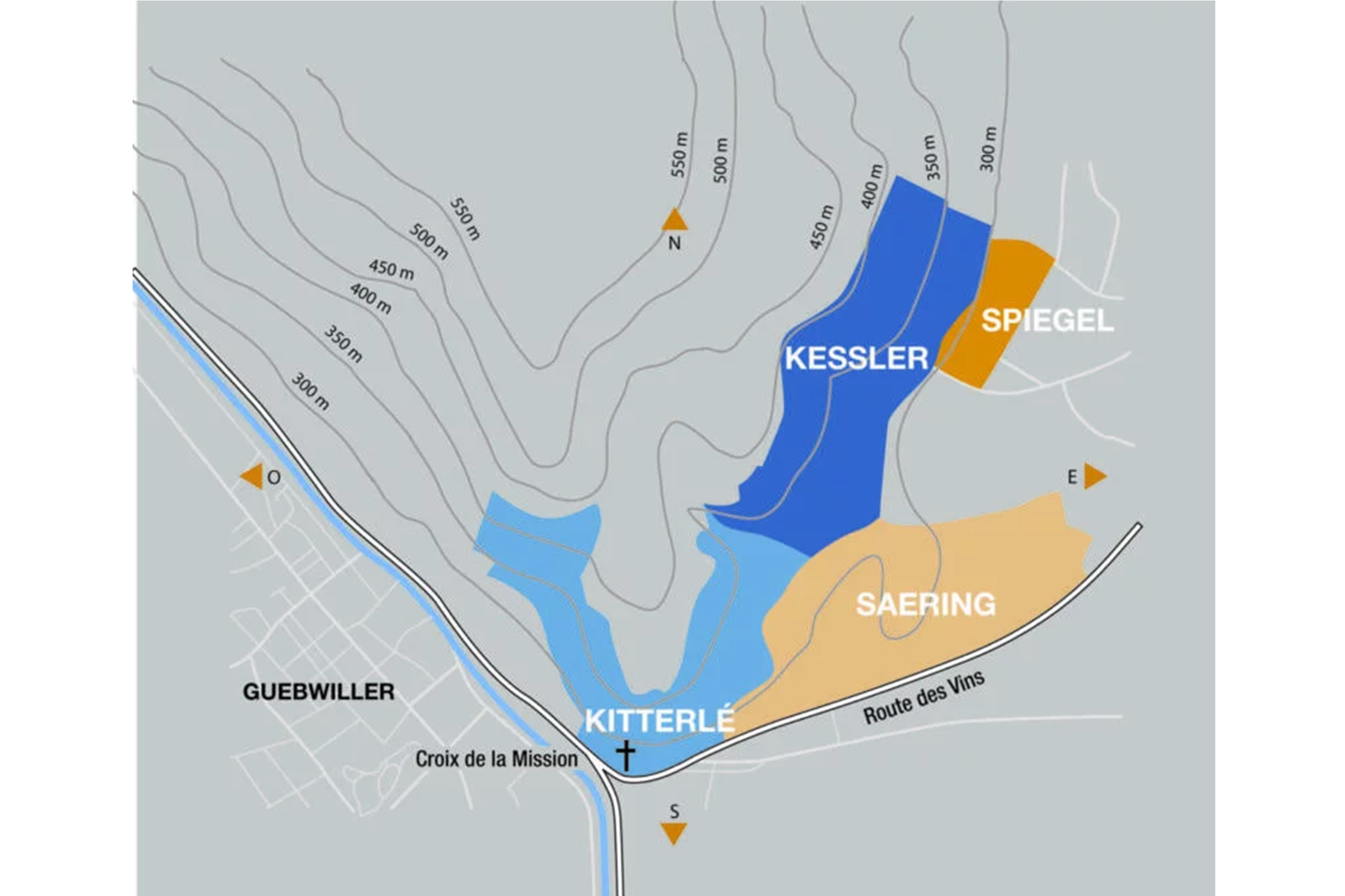
SHOP DOMAINE SCHLUMBERGER WINES
Henschke 2019 Single Vineyard Release
A Vintage Graced by The Nurturer
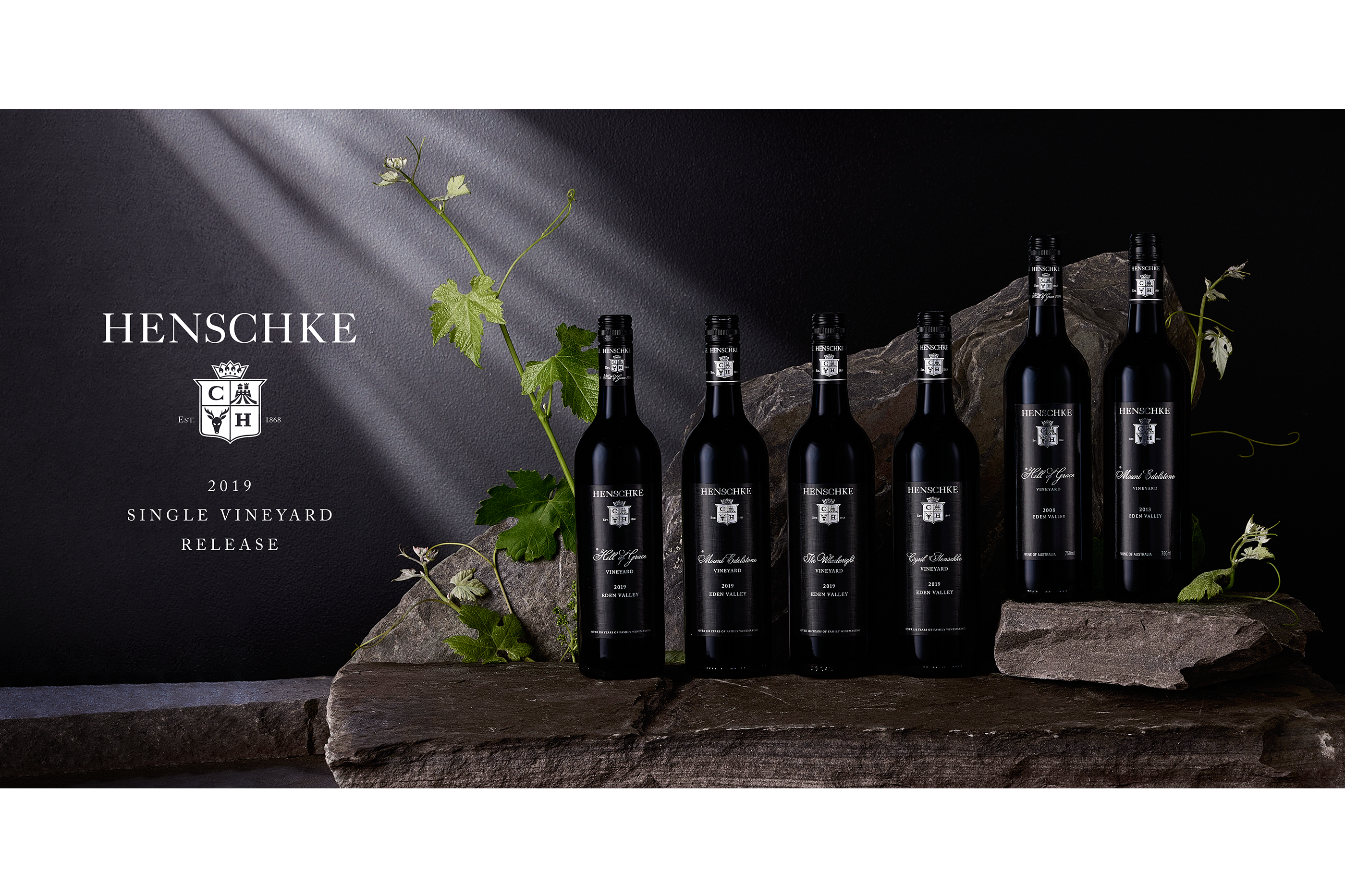
Today marks the global release of the highly acclaimed 2019 Henschke Single Vineyard wines from the Eden Valley. This revered collection includes Hill of Grace Shiraz, Mount Edelstone Shiraz, The Wheelwright Shiraz and Cyril Henschke Cabernet Sauvignon.
As single-vineyard wines, production is limited by the size of the site and how the season unfolds. While 2019 was a challenging season and yields were miniscule, the wines produced are of outstanding quality with wonderful flavour concentration and incredible power, excellent balance and seamless, mature tannins that reveal impressive length and depth.
To complement the 2019 single-vineyard wines, two museum vintages have been jointly released directly from the Henschke cellars; 2008 Hill of Grace Shiraz and 2013 Mount Edelstone Shiraz.
These three vintages - 2019, 2013 and 2008 - all share a common thread - warm, dry seasons that resulted in extremely high-quality yields with an outstanding ability to age.
“2019 gave us many challenges to meet. With a warm and dry start to the season, a blanket of rich compost and mulch under the vines was especially important to keeping the roots cool and preserving soil moisture through summer. Due to wind, frost, hail and the hottest summer’s day on record, we worked hard to protect the precious bunches remaining. Although the yields were miniscule, the quality produced by these old vines shines through. Our love and nourishment in the vineyard has been returned in the wines.”
- Prue Henschke, Viticulturist
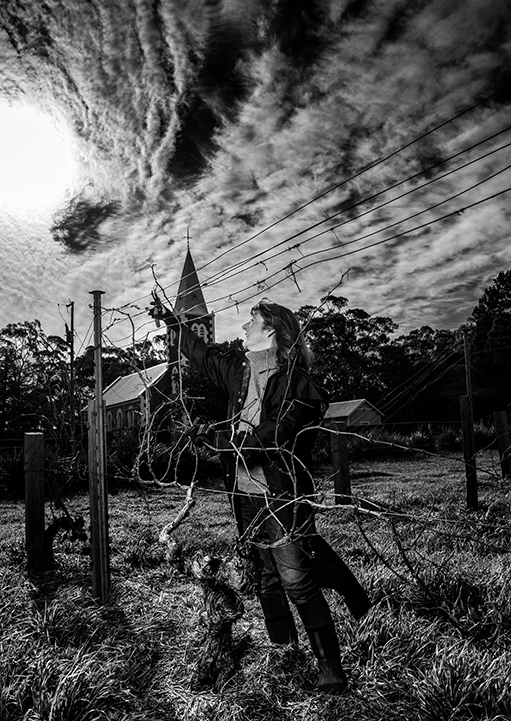 Prue Henschke at Hill of Grace Vineyard
Prue Henschke at Hill of Grace Vineyard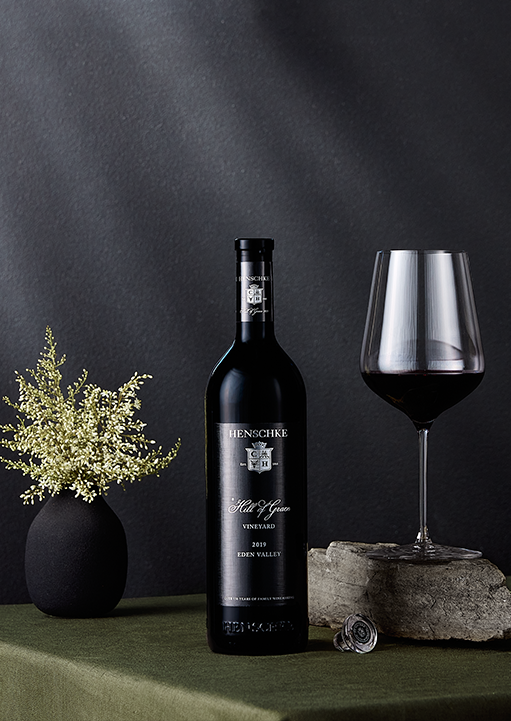 2019 Hill of Grace Shiraz
2019 Hill of Grace Shiraz
99 Points | James Halliday | The Weekend Australian
"The vivid colour, the perfume of the bouquet, the harmony of the red and black fruits, and the reassurance of precisely tailored tannins all add to the triumph of Prue Henschke in the vineyard, and Stephen Henschke in the winery. The synergy between these parts is such that there's no hint of a difficult - indeed, very difficult - vintage.”
98 Points | Andrew Caillard MW | The Vintage Journal
"Supple and minerally with fresh pure blackberry, raspberry fruits, fine slinky / chalky textures, well integrated marzipan, roasted chestnut characters, attractive inky complexity and fresh long indelible acidity. Builds up brambly firm, pure and tight with star anise notes. A lovely claret style with beautiful volume and understated power."
97 Points | James Halliday | The Weekend Australian
“A particularly generous and forthcoming wine, with blackberry and plum driving the immediate response, the luscious bouquet quickly followed by the intense palate before a second response of elegance and finesse flows from wonderfully crafted tannins.”
97 Points | Sarah Ahmed | Decanter
“This is an utterly beguiling vintage of this single-vineyard Cabernet, with terrific expression of variety, sub-region and terroir. Ripe but sinuous, lissom even; the blackcurrant, blackberry and mulberry fruit is scented with violets, lilac and garrigue herbs, plus delicate notes of tobacco, coffee and walnut cake and cedar.”
99 Points | Huon Hooke | The Real Review
“Sumptuous palate flavour, with masses of tannin but also a core of sweet fruit endures. The finish is energetic and driving, the aftertaste lingers on for an eternity. A majestic mature shiraz in the prime of its life. A great wine!”
97 Points | Dave Brookes | Halliday Wine Companion
“It's in a wonderful place with some light tertiary tones beginning to make themselves known in the form of gentle leather and tobacco notes that lie behind the elegant red and dark berry fruits…It's a pleasure to see these museum releases.”
Mezzanine The Fine Wine Specialist is delighted to celebrate the release of these beautiful, rare and highly respected Australian wines.

The fifth, sixth and seventh generations of the Henschke family
Vintage with Stonier
Leading producers of premium pinot noir and chardonnay from the Mornington Peninsula, Stonier Wines, have given us an insight into their 2024 vintage.
Stonier's new winemaker Julian Grounds says, “A full year of us farming these old vines. We’ve had a late, dry and importantly warm summer with small but intense berries; I’m all in on the quality and complexity of the wines we will produce off our land in 2024. They will shift the dial.”
We can’t wait to see what this brilliant team can do with the 2024 vintage.
New Release Cullen Wines
We are delighted to announce four wonderful new releases for Cullen Wines; 2022 Diana Madeline, 2023 Kevin John Chardonnay, 2023 Grace Madeline and 2023 Ephraim (formerly named Mangan East Block).
Both the 2023 Ephraim and the 2023 Kevin John are presented to you in a light weight glass for the first time, reducing 9 tons of CO2 emissions for these wines.
2022 Diana Madeline
The 2022 Diana Madeline is a culmination of over 50 years of dedication effort and respect for the land to make the best quality wine. The vintage was perfect for elegant cabernet sauvignon, with warm conditions early and then cooler conditions making it an epic vintage with reds ripening earlier than usual.
"A genuine Australian First Growth highlighting the genius of vineyard site, meticulous harvesting (five separate picking times), empathetic and imaginative winemaking." 99 Points Andrew Caillard, The Vintage Journal
“A wine of extraordinary elegance and poise.” 98 points Ray Jordan, Wine Pilot
“Bright and brilliant.” 98 points Ken Gargett, Wine Pilot
“Tremendous depth and muscle to this wine.” 98 points Huon Hooke, The Real Review
2023 Kevin John
The 2023 Kevin John is a powerful, bold, textural, example of a point in the journey with no end of discovering terroir through biodynamics. Picked across three weeks according to the biodynamic calendar, capturing fruit and flower days, from a full Moon, Moon opposite Saturn astral event to the new moon flower day in late February. Hand harvested, whole bunch basket pressed. Fermented in concrete egg, amphorae and biodynamic puncheons. Eight months maturation in biodynamic oak puncheons of which 80% were new, bottled without fining or filtration. Made from 100% dry farmed biodynamically certified Wente/Gin Gin clone.
“A rich, generous and quite open-knit style of chardonnay that's already drinking well.” 96 points Huon Hooke, The Real Review
“It’s a powerful expression of Wilyabrup Chardonnay... positively dripping with golden flavour and energy, but so very good.” 96 points Gary Walsh, The Wine Front
2023 Ephraim
Ephraim Mayo Clarke, Kevin John Cullen’s grandfather, property owner and Member of Parliament, who established the first winery in the southwest in Bunbury in 1896. Hand harvested grapes of the best blocks of biodynamically certified Mangan Vineyard Malbec and Petit Verdot were naturally fermented and basket pressed and then matured in 35% new oak for 8 months.
The resultant blend is 70% Malbec and 30% Petit Verdot. A naturally fermented wine with no additions other than minimal sulphur dioxide to catch the terroir of Mangan vineyard in Wilyabrup. The 2023 vintage was excellent especially for red and colour and this wine is no exception. No fining.
2023 Grace Madeline
Grace Madeline wine is a blend of Sauvignon Blanc (75%) and Semillon (25%), planted on their own roots in 1976 on Cullen Estate. These vines are certified biodynamic and carbon neutral. The first blend of this type was made at Cullen Wines in 1979, from Cullen Estate fruit and it has become one of the flagship blends of the region since that time.
“Seamless integrity that delights the senses.” 95 points Stuart Knox, The Real Review
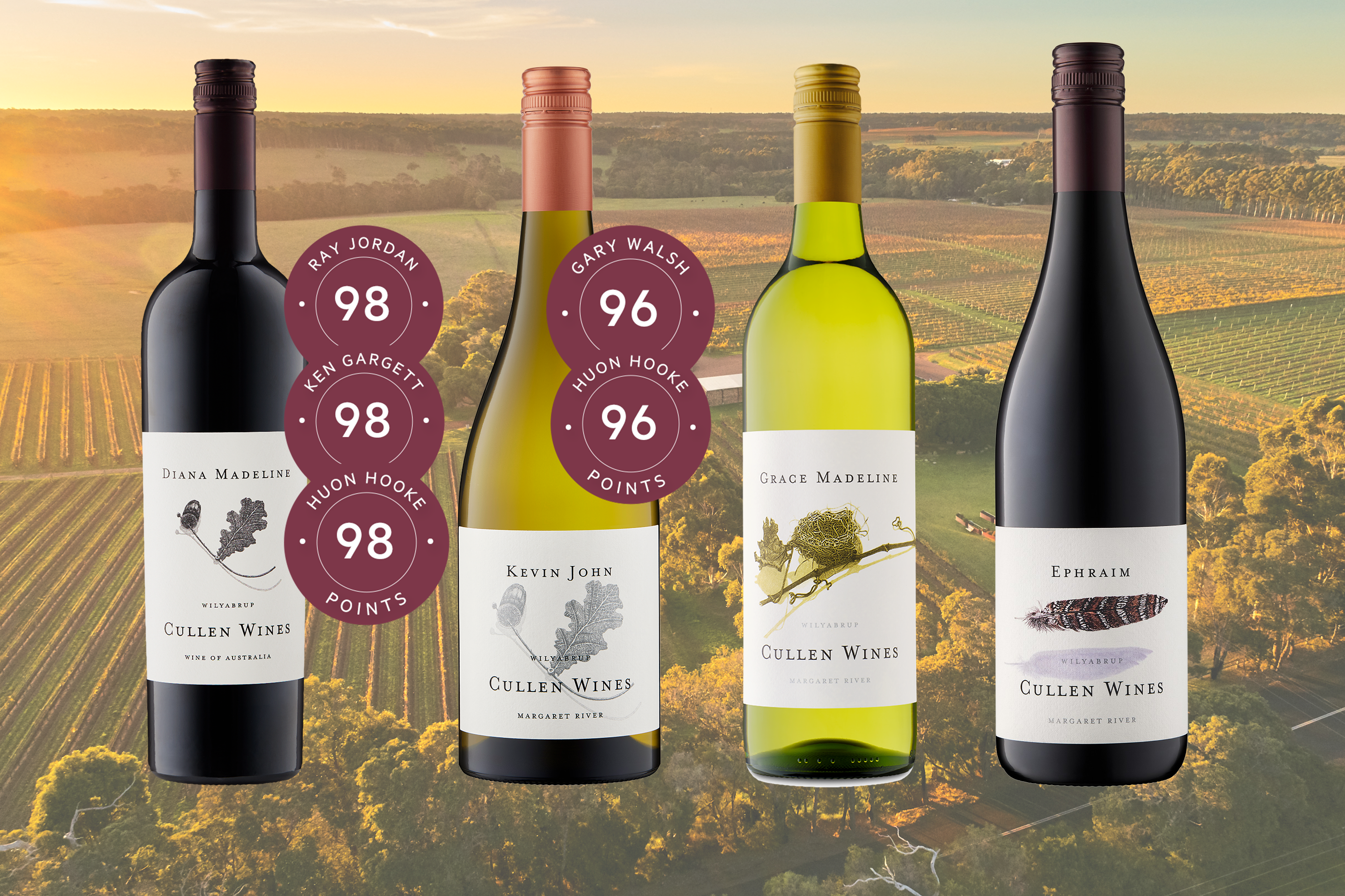
Craggy Range New Chief Winemaker
Craggy Range has appointed Ben Tombs as Chief Winemaker. Ben has been Winemaker at Craggy Range for the past two years and brings an impressive array of qualifications and experience to the new role.
Ben has established himself as a rising star in the world of winemaking. He was awarded the inaugural Central Otago Young Winemaker of the Year in 2018, holding the title for three consecutive years and earning New Zealand Young Winemaker of the Year in 2020. His ongoing pursuit to push the boundaries for improving wine quality and the emphasis on custodianship have set him apart in the industry.
Ben's journey in the world of wine has seen him complete numerous vintages across renowned wine regions, including Burgundy, Oregon, Yarra Valley, Hermitage, Hunter Valley, and various locations throughout New Zealand. His extensive experience in diverse winemaking environments has enriched his knowledge and expertise.
"We are delighted to have Ben step into the role. His wealth of knowledge, accolades, experience, and dedication to our brand's vision make him the perfect choice to lead Craggy Range into a new era of winemaking excellence."
- Craig Sims, Craggy Range CEO
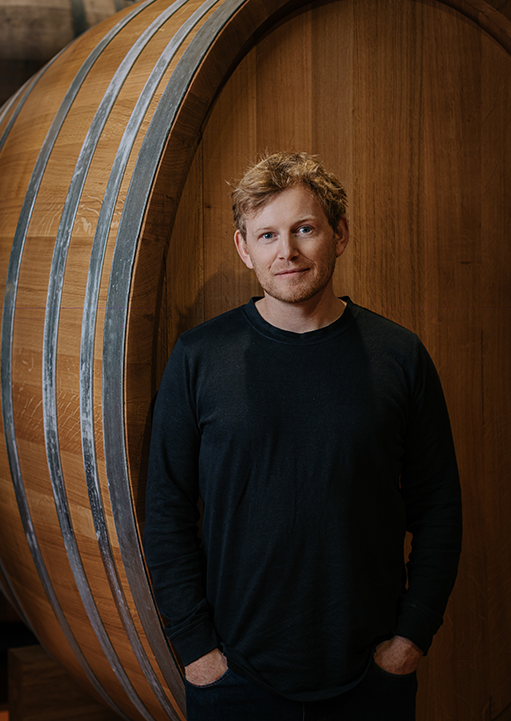
Robert Parker Green Emblem
Celebrating Sustainable Excellence in the Wine Industry
The Robert Parker Green Emblem is a prestigious award created to recognize and celebrate the most extraordinary cases of sustainable efforts in the wine industry. It is a symbol of honor and distinction granted to wine producers that have demonstrated outstanding achievements in sustainability and environmental stewardship.
Mezzanine The Fine Wine Specialist would like to congratulate Yangarra Estate Vineyard on recently joining Henschke and Cullen in attaining a Green Emblem.
Following are some extracts from Robert Parker on the wineries that have joined the community of sustainable champions.
Yangarra Estate Vineyard
Yangarra was recently awarded a Green Emblem for achieving inspiring, outstanding levels of sustainability. Yangarra joins the list as the third Australian winery.
The answer to great wine undoubtedly starts in the vineyard but finishes in the winery, and Yangarra Estate Vineyard in McLaren Vale is a testament to what is possible when the ground is restored and nurtured into bottle.
The cyclical, “nothing wasted, nothing lost” philosophy here is, frankly, a thing of beauty.
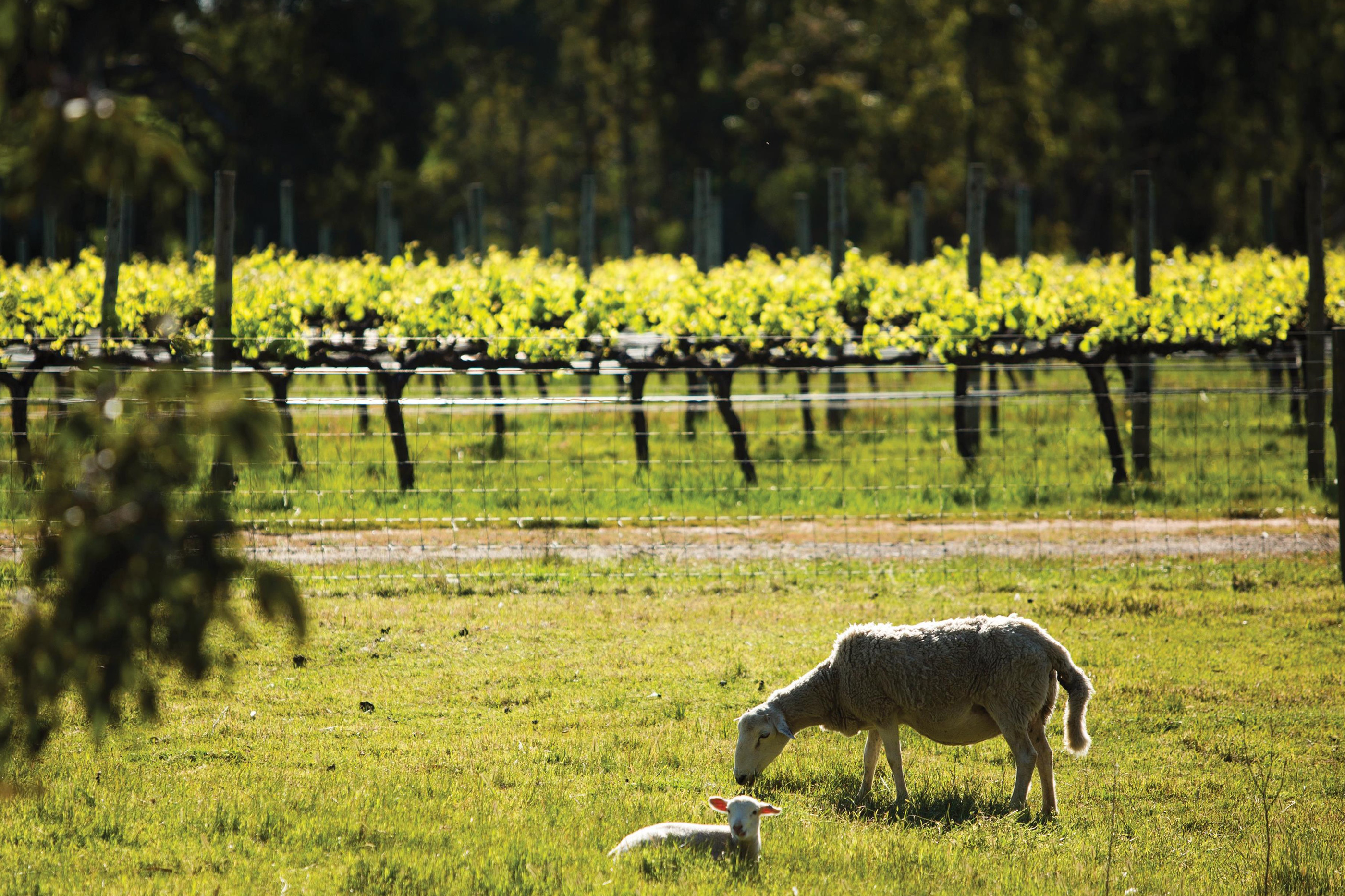
Cullen
Cullen has been certified organic since 2003 and certified biodynamic since 2008—one of the first wineries in Australia in each of those categories. The commitment to sustainability goes beyond practices in the vineyard and kitchen gardens. Since 2006, Cullen has been offsetting its carbon emissions largely through local carbon-sequestration projects. In fact, the entire operation is now carbon positive. Forty percent of the winery’s power needs are met through its own solar panels, with the rest purchased from solar and wind sources.
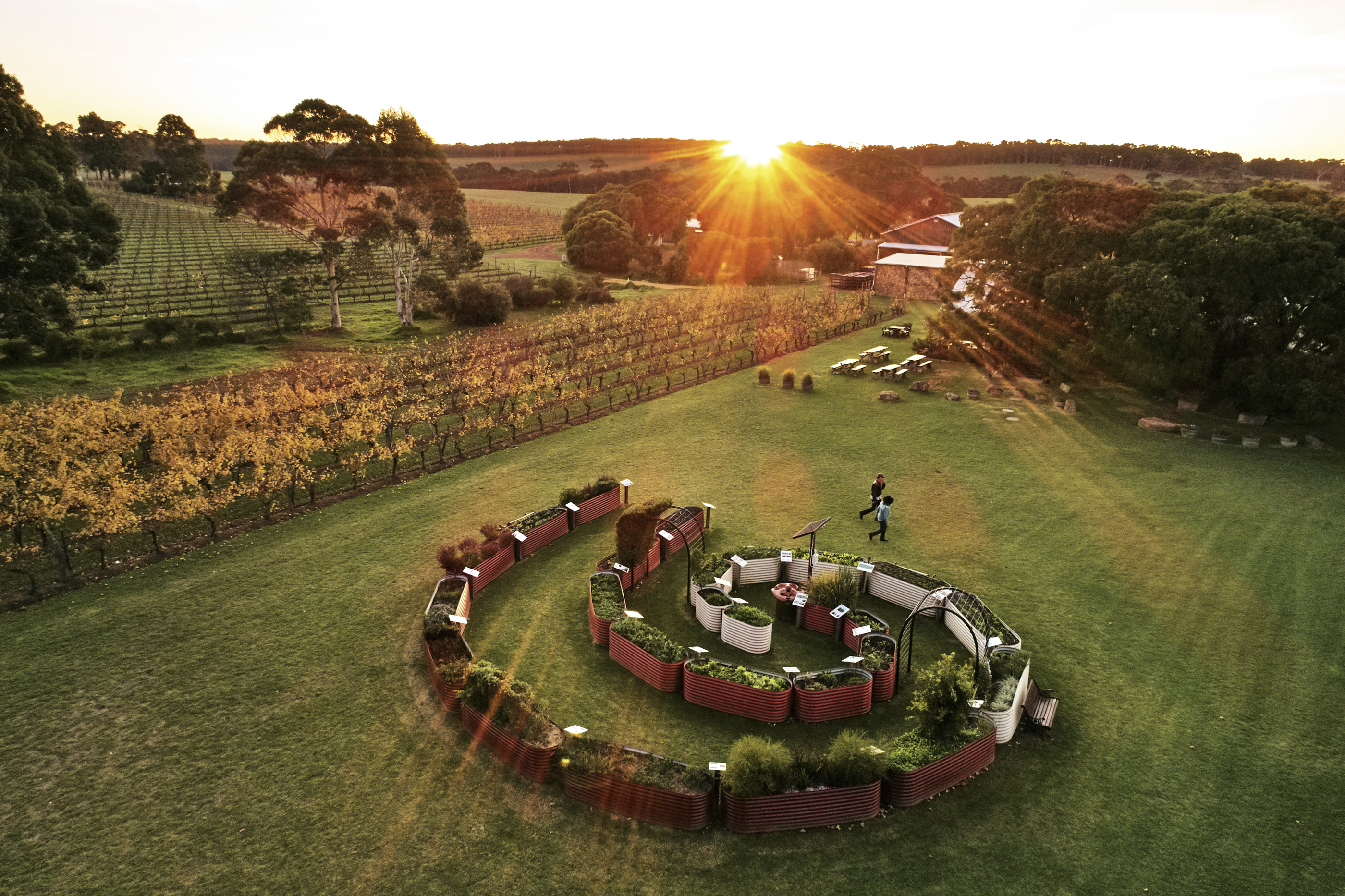
Henschke
In the New World, for a winery to be able to boast, “Over 150 years of family winemaking,” already says something about that family’s commitment to sustainability. When the same family are stewards to vineyards that were planted in the middle of the 19th century—and have been continuously farmed since then—it means even more. The family’s stated goal is to have a truly sustainable business, minimizing negative impacts on the environment in the short-term and eliminating negative impacts in the long run. But beyond that, the family has become a standard-bearer for the sustainability movement. This award recognizes their achievements.
